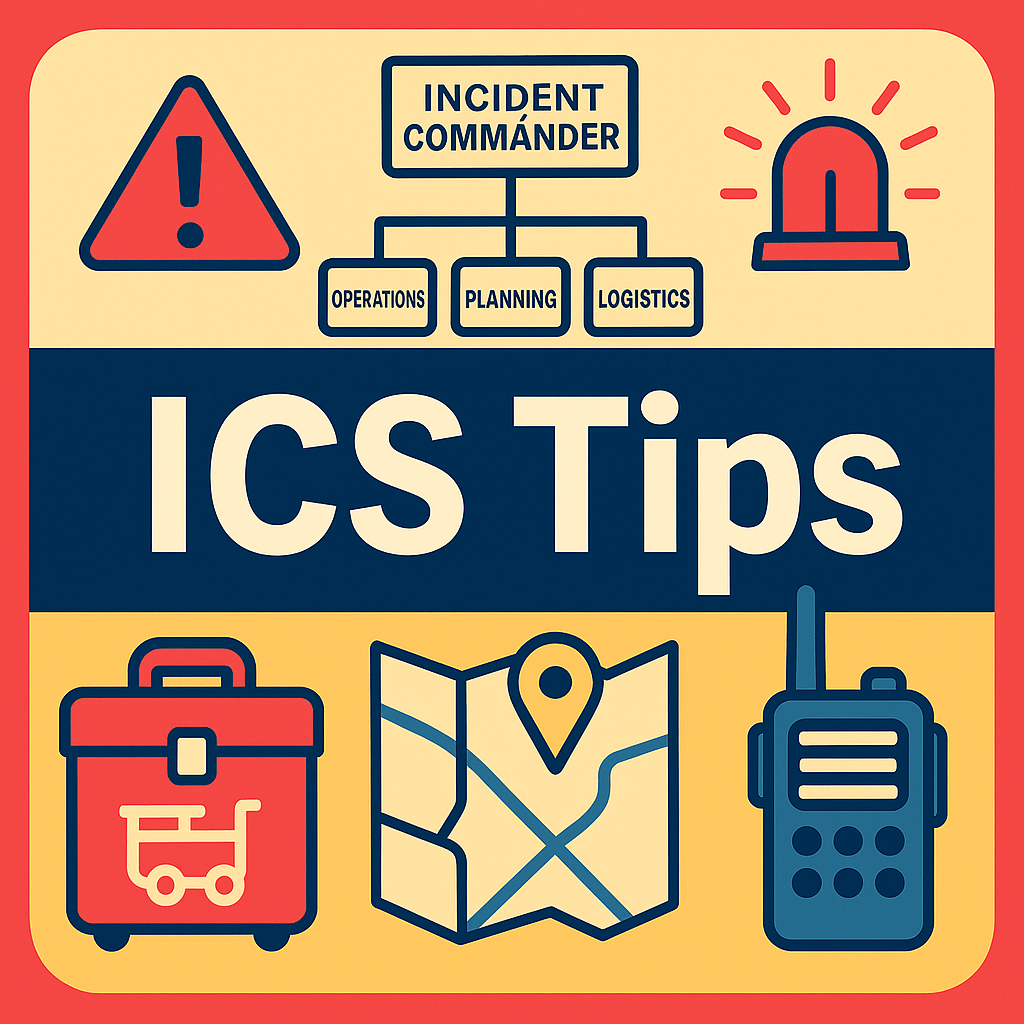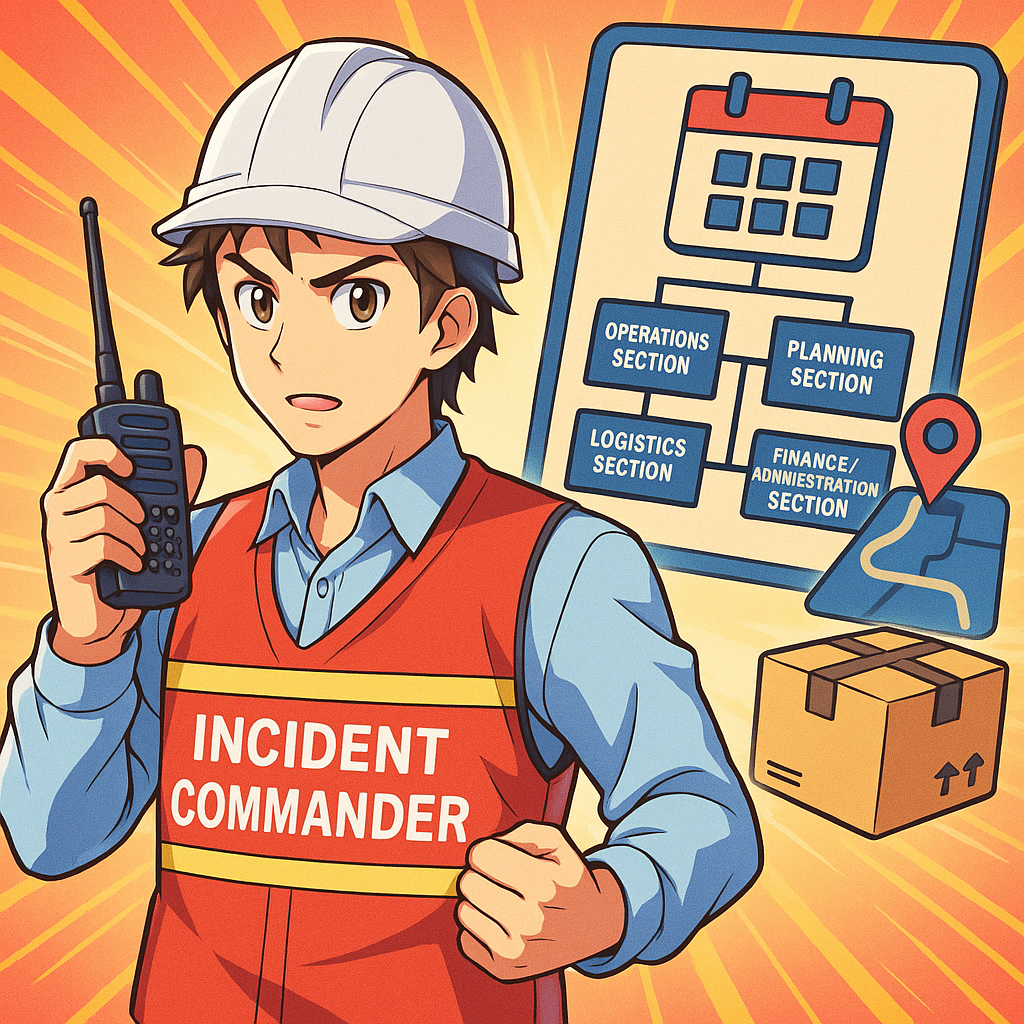Effective Incident Command System Tips are essential for any organization aiming to respond swiftly and safely to emergencies.
By mastering these strategies, incident managers can ensure clear roles, robust communication, and efficient resource deployment from the moment an incident is declared.

Whether you’re new to the Incident Command System or looking to sharpen your skills, this guide distills 100 actionable tips into ten core categories to support every phase of response.
- Effective Incident Command System Tips for Pre-Incident Planning
- Effective Incident Command System Tips for Establishing Command Structure
- Effective Incident Command System Tips for Incident Communication
- Effective Incident Command System Tips for Resource Management
- Effective Incident Command System Tips for Safety and Accountability
- Effective Incident Command System Tips for Operational Strategy
- Effective Incident Command System Tips for Logistics Support
- Effective Incident Command System Tips for Finance and Administration
- Effective Incident Command System Tips for Demobilization and Transition
- Effective Incident Command System Tips for Training and Evaluation
Effective Incident Command System Tips for Pre-Incident Planning
Effective Incident Command System Tips begin long before an incident occurs—during your pre-incident planning stage.
Establish clear organizational charts, resource inventories, and communication protocols in alignment with the compliant workplace safety policy you’ve developed.
Familiarize your team with the FEMA ICS Overview to ensure everyone understands standardized terminology and structure.
- Identify potential incident scenarios
- Develop ICS organizational charts
- Pre-assign roles and responsibilities
- Create a resource inventory log
- Define activation thresholds
- Establish mutual-aid agreements
- Map out staging areas
- Test communications systems
- Conduct tabletop exercises
- Review and update plans annually
Effective Incident Command System Tips for Establishing Command Structure
Effective Incident Command System Tips for establishing a robust command structure ensure that leadership roles are clear and scalable. Confirm that your Incident Commander, Operations Section Chief, and support staff understand their specific duties.
Consistency here aligns with the National Incident Management System (NIMS Resource Center), fostering interoperability across agencies.
- Assign a qualified Incident Commander
- Delegate authority clearly
- Define span of control limits
- Establish Section Chiefs early
- Use ICS Form 201 for documentation
- Rotate leadership as needed
- Empower Unit Leaders
- Monitor performance metrics
- Keep an updated org chart visible
- Schedule regular command briefings
Effective Incident Command System Tips for Incident Communication
Effective Incident Command System Tips for communication help prevent misunderstandings and information gaps. Establish a common radio channel and backup methods (e.g., satellite phones).
Encourage plain-language usage to avoid code-word confusion during high-stress operations.
- Use standardized ICS terminology
- Confirm clear text over radio
- Implement a communications plan
- Establish message delivery protocols
- Test backup systems
- Use incident-specific identifiers
- Log all communications
- Hold regular situation updates
- Coordinate with Public Information
- Record and archive transmissions
Effective Incident Command System Tips for Resource Management
Effective Incident Command System Tips for resource management ensure the right assets arrive at the right time. Track personnel, equipment, and supplies using ICS forms and software.

Maintain accountability through periodic checks and demobilization planning.
- Tag resources with unique IDs
- Use ICS Form 205 for communications
- Implement a check-in/check-out system
- Track equipment usage hours
- Pre-stage critical resources
- Rotate crews to manage fatigue
- Coordinate cross-agency resources
- Prioritize resource requests
- Update resource status frequently
- Plan for resource relief
Effective Incident Command System Tips for Safety and Accountability
Effective Incident Command System Tips for safety put personnel well-being first. Conduct regular risk assessments and enforce use of Personal Protective Equipment.
Incorporate a Safety Officer into your command structure early.
- Appoint a dedicated Safety Officer
- Perform ongoing hazard assessments
- Enforce PPE compliance
- Monitor fatigue levels
- Establish emergency medical support
- Use ICS Form 215A for safety messages
- Conduct safety briefings daily
- Track near-miss incidents
- Update safety protocols as needed
- Debrief on incidents to improve
Effective Incident Command System Tips for Operational Strategy
Effective Incident Command System Tips for operations focus on defining objectives and tactical priorities. Use the Incident Action Plan (IAP) to formalize your strategy for each operational period.
Ensure every team member understands the IAP’s goals.
- Set SMART objectives
- Document objectives in ICS Form 202
- Align tactics with strategy
- Sequence operational tasks
- Use resource meetings to refine tactics
- Adjust strategy based on progress
- Communicate changes promptly
- Confirm task assignments
- Monitor key performance indicators
- Review IAP at each shift
Effective Incident Command System Tips for Logistics Support
Effective Incident Command System Tips for logistics guarantee that operational needs are met without delay. Coordinate supply chains, facilities, and equipment repair through the Logistics Section.

For global best practices, review ISO 22320: Incident Management Standard.
- Establish a Logistics Section Chief
- Set up a supply distribution point
- Track consumables inventory
- Coordinate with vendors pre-incident
- Manage facilities and shelters
- Plan for equipment maintenance
- Arrange transportation assets
- Provide food and lodging support
- Monitor supply usage rates
- Resolve logistics bottlenecks quickly
Effective Incident Command System Tips for Finance and Administration
Effective Incident Command System Tips for finance ensure expenditures are tracked and reimbursable costs documented.
Establish timekeeping, procurement, and cost analysis procedures early in the incident.
- Appoint a Finance Section Chief
- Track personnel time on ICS Form 214
- Document all incident costs
- Implement procurement policy
- Use purchase orders for supplies
- Reconcile invoices weekly
- Manage vendor contracts
- Prepare cost summaries
- Coordinate with finance auditors
- Archive financial records
Effective Incident Command System Tips for Demobilization and Transition
Effective Incident Command System Tips for demobilization preserve resources and ensure orderly release of personnel and assets.
Plan demobilization in parallel with operations to prevent last-minute rush.
- Develop a Demobilization Plan
- Use ICS Form 221 for release
- Sequence resource demobilization
- Confirm relief assignments
- Conduct demobilization briefings
- Return borrowed equipment
- Finalize cost accounting
- Archive incident documentation
- Debrief key personnel
- Update organizational lessons
Effective Incident Command System Tips for Training and Evaluation
Effective Incident Command System Tips for training and evaluation build a culture of continuous improvement. Regular exercises, critiques, and after-action reports sharpen your team’s performance over time.
See our training and safety awareness resources for more guidance.
- Conduct regular ICS drills
- Use realistic scenarios
- Evaluate performance metrics
- Hold hot-wash debriefs
- Draft an After-Action Report
- Identify improvement areas
- Update training curricula
- Cross-train staff
- Certify section chiefs annually
- Share lessons learned
By implementing these 100 Effective Incident Command System Tips, your team can enhance preparedness, coordination, and safety across every phase of an incident.
Always refer back to these 100 Effective Incident Command System Tips to maintain a high standard of emergency response readiness.


No comments yet